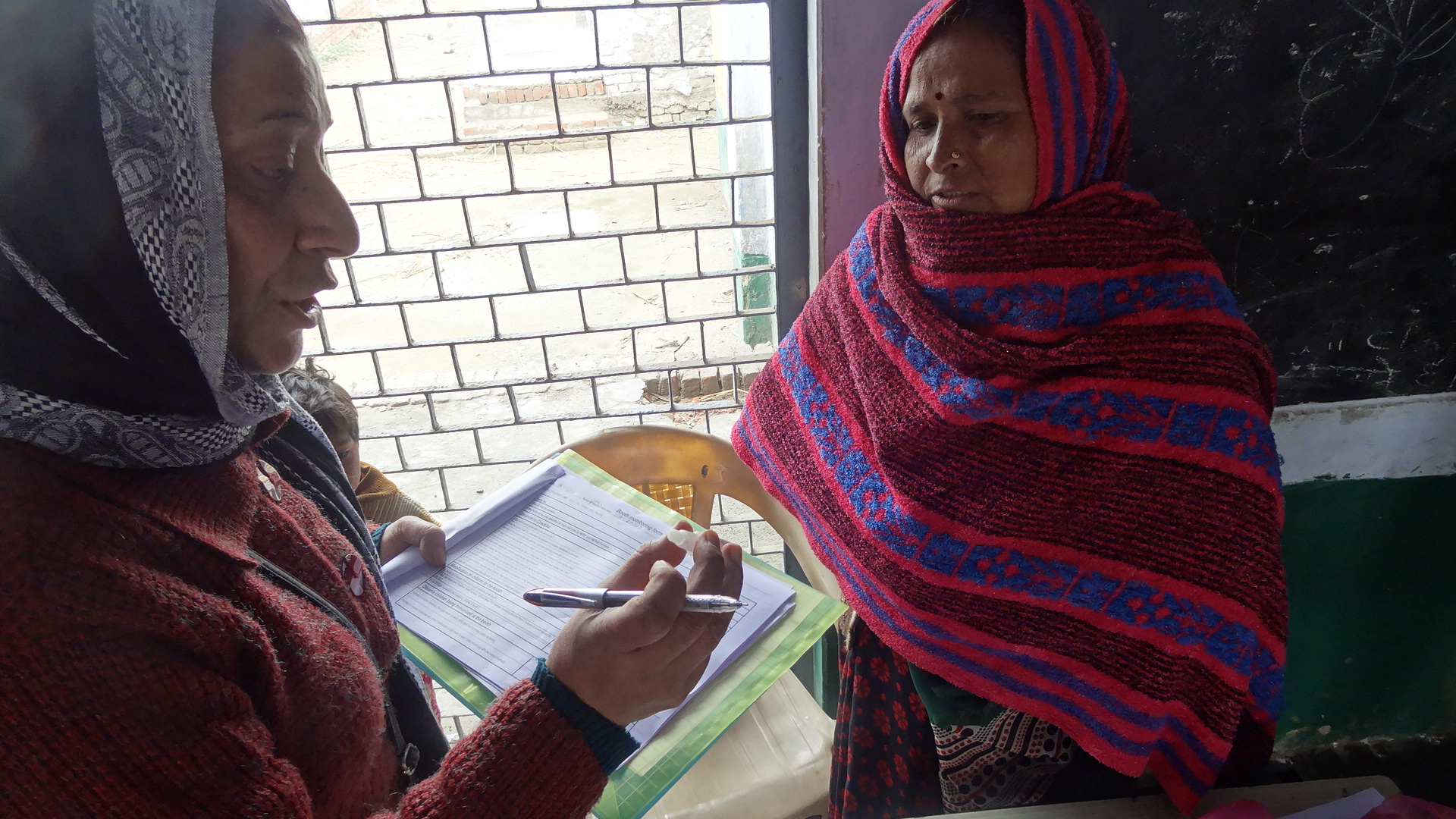
Women in rural India may not be privy to the best healthcare themselves, but often they are the ones providing health care services to India's most needed communities. This January, India celebrated three years without a new polio case.
After 25 years of a global partnership, including international partners such as Rotary International, WHO, UNICEF, and the CDC, India finally managed to rid herself of a disease that once crippled over 100,000 people every year.
One of the secrets to India's success is an army of health workers, 2.3 million of them actually. And most are women. During every National Immunization Day (held four times a year), they help vaccinate 170 million under the age of five.
Women health workers are an asset, says Dr. Bahl, technical advisor to the World Health Organization in Delhi. And it's not just one brigade of female health workers that conduct immunizations. Rather, as Dr. Rakesh Vishwakarma learns daily in his surveillance rounds for WHO throughout Uttar Pradesh, a state that used to have the highest number of polio cases, it's a legion of female health workers that make it happen.
Kusum Srivastava is one of them. Appearing quite cheery for a cold, rainy morning in Aligarh, she's eager to get the immunizations rolling. Her bag is overflowing with charts and papers - all meant to catalogue their progress during the day. She falls under the umbrella of UNICEF community mobilizers. Her title reads "Block Mobilization Coordinator;" simply put, she is responsible for the communication efforts (posters, banners, announcements) for polio in one of Aligarh's underdeveloped neighborhoods, Shah Jamal.
Having been at it for 10 years now, she saw the polio campaign at its worst, when families would refuse to have their children vaccinated.
"It was all misunderstandings. We had to go door-to-door and explain to people nicely that the polio vaccine was safe, and you should have your child vaccinated. It's not that complicated. But you have to be patient," she says, in Urdu.
She joins a cohort of female health workers at a polio booth. They're stationed on a ledge next to a pan-wallah (a common street food). Three other ladies join her: one in a burqa, two in salwar-kameez. One is handing out panjiri (a butter-sugar-flour concoction), given for nutrition. The other is taking notes in a chart, marking off how many children have been vaccinated. And the third is holding an ice chest with vaccine vials inside; she's searching for another new one to open.
They've been in operation for two hours; so far, they've inoculated 35 children in the neighborhood. This, though, is just a fragment in a city of 3 million. Tomorrow, they will go door-to-door to target the children that may have been missed at the booths.
The compensation for such jobs is nominal: roughly 1 USD a day. Srivastava jokes, "If I did this work just for money, I would have quit a long time ago." Rather, she says, it gives her "meaning, purpose, an identity in the community."
Two health workers in a small village in Akrabad, about 15 miles outside of Aligarh city, echo her sentiments. "We're known in the community now," says an older health worker. She is an ASHA, or Accredited Social Health Worker, for the village, a collection of about 100 households.
ASHAs fall under India's National Rural Health Mission. Thus, their tasks center around health: educate women on pre-natal and neonatal care, encourage them to give birth at a clinic, or under the guidance of a midwife to avoid complications. Since the program started in 2005, the government has trained and employed over 850,00 ASHA workers. In recent years, they've also been incorporated into vaccination rounds, particularly polio. For every child that's fully immunized at birth, they receive 150 Rupees (or 3 USD).
ASHA workers are often accompanied by ANM, or Auxillary Nurse Midwives, who are responsible for educating the ASHA workers, making sure they carry out their tasks, liaising with local officials, and encouraging local families to invest in their child's health care.
Lastly, they're also joined by Anganwadi workers who stem from the Department of Social Welfare. They tackle overall well-being, including nutrition. Thus, it was the Angawadi worker who showed up at the polio booth with bags of fortified food (panjiri) to hand out to the children.
It's these layers of grassroots healthcare, driven by women, that have enabled us to reach such high coverage, says. Dr. Vishwakarma. UP and Bihar, states that have historically been the trouble spots for polio, now boast 99 percent coverage.
"Literally, every child is reached," says Dr. Vishwakarma. Women make the process possible, he explains, because they can easily go into people's homes, especially in Muslim communities. In contrast, families would be hesitant to have a male stranger come in their house and engage with their children. Plus, it gives the women a supplementary income to take home to their own households.
Now, the same army is being used for other immunizations - measles, TB, Hepatitis, rubella. As polio's story comes to a close, India is gearing up for a similar effort for routine immunizations. Once again, it'll be these women health workers at the frontline.





